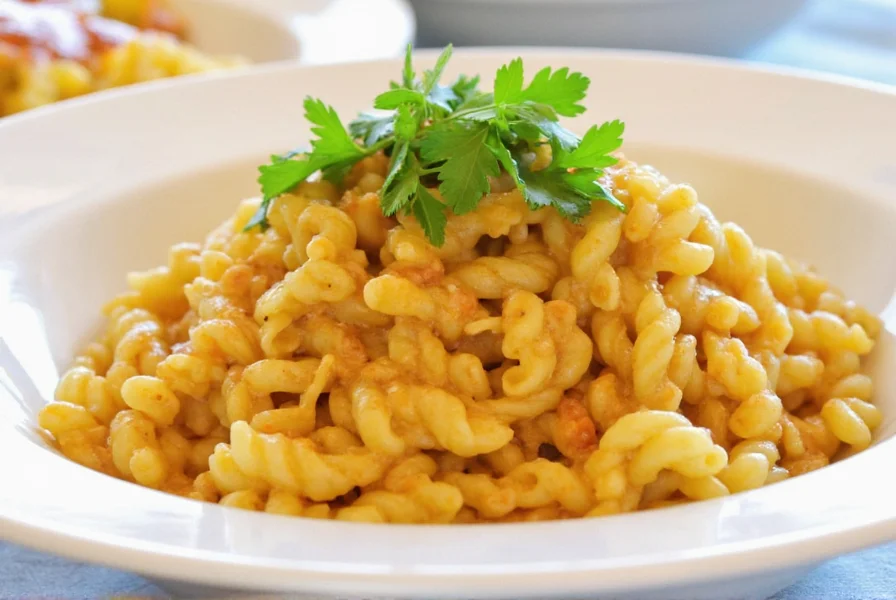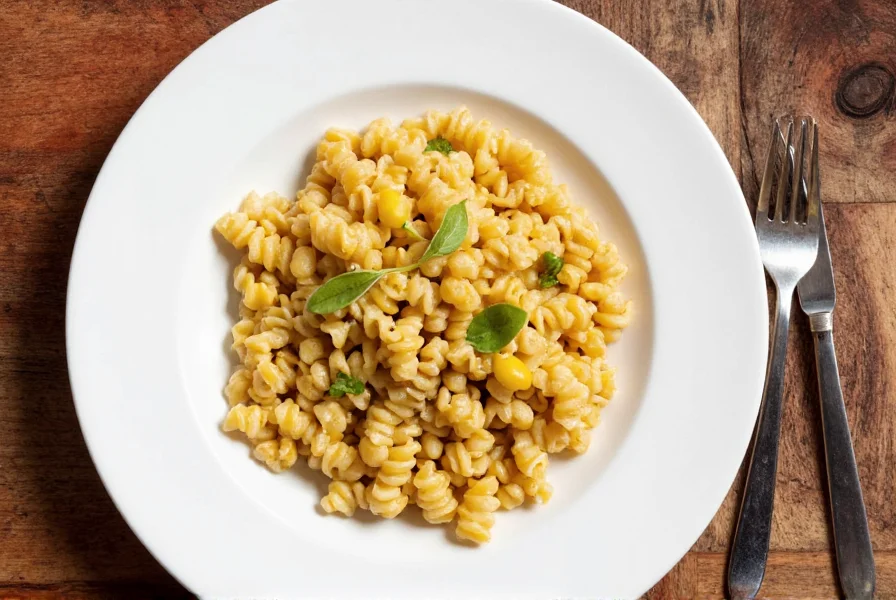Spaetzle, those delightful German egg noodles, deserve more than just being an afterthought on your plate. Properly serving spaetzle enhances both its delicate texture and subtle flavor, transforming it from a simple side dish into the star of your meal. Whether you've just made a fresh batch from scratch or are working with store-bought varieties, understanding the art of serving spaetzle elevates your culinary presentation significantly.
Traditional German Serving Methods
In Swabia, the birthplace of spaetzle, these soft egg noodles appear in nearly every hearty meal. The most authentic approach involves serving spaetzle as a complement to rich meat dishes, allowing the noodles to soak up flavorful gravies while providing a comforting textural contrast.
Traditional German households often use a Schwarzwälder Kirschtorte (cherry wood serving board) to present spaetzle family-style. This wooden platter keeps the noodles warm while adding rustic charm to the presentation. For everyday meals, Germans typically serve spaetzle directly from the cooking pot to maintain optimal temperature.
| Traditional Pairing | Region of Origin | Key Serving Elements |
|---|---|---|
| Sauerbraten with Spaetzle | Rhineland | Vinager-marinated beef, dark gravy, spaetzle on side |
| Jägerschnitzel mit Spaetzle | Swabia | Mushroom gravy poured directly over noodles |
| Käsespätzle | Swabia/Bavaria | Cheese and onion layers, served bubbling hot |
| Schweinshaxe mit Spaetzle | Bavaria | Crispy pork knuckle, dark beer gravy on noodles |
Perfect Protein Pairings for Spaetzle
The right protein transforms spaetzle from a side dish into a satisfying main course. German cuisine offers time-tested combinations that balance richness with comfort.
Pork shoulder (Schweinebraten) represents the gold standard pairing. The tender, slow-roasted meat with its crackling skin provides textural contrast to the soft noodles, while the natural pan juices create an instant gravy. For optimal results, ladle some of the meat drippings directly over freshly cooked spaetzle.
When serving poultry, roasted duck offers an exceptional match. The rich, slightly gamey flavor of duck complements spaetzle beautifully, especially when finished with a cherry or red wine reduction. For lighter meals, roast chicken with lemon-herb spaetzle creates an elegant weeknight dinner.
Sauce and Gravy Techniques
The sauce makes or breaks your spaetzle presentation. Unlike Italian pasta that often carries sauce, German spaetzle typically serves as a base that absorbs surrounding flavors.
For traditional brown gravy (Braunsoße), follow this professional technique: After roasting meat, deglaze the pan with beef broth, add a roux, then simmer until thickened. The critical step? Pour the hot gravy directly over the spaetzle at the table, allowing guests to watch the noodles soak up the rich liquid. This method preserves the spaetzle's delicate texture better than pre-mixing.
For butter-based preparations, use the Butterschmelze technique: Melt butter until the milk solids turn golden brown, then immediately toss with spaetzle and fresh parsley. The nutty aroma of browned butter elevates simple spaetzle into something extraordinary.

Vegetable Accompaniments That Shine
Complete your spaetzle presentation with seasonal vegetables that provide color contrast and complementary flavors. Germans traditionally serve two vegetable sides with spaetzle-based meals.
Red cabbage (Rotkohl) offers the perfect sweet-tart counterpoint to rich meat and spaetzle. Cook it slowly with apples, onions, and a splash of red wine vinegar for authentic flavor. The vibrant purple color creates visual appeal against the pale noodles.
For spring and summer meals, green beans with almonds provides a light, crisp contrast. Blanch the beans until tender-crisp, then sauté with toasted sliced almonds and a touch of lemon zest. The bright green color pops against the golden spaetzle.
Creative Modern Variations
While respecting tradition matters, contemporary chefs have developed innovative spaetzle presentations that appeal to modern palates without sacrificing authenticity.
Truffle spaetzle has gained popularity in upscale German restaurants. Add a few drops of white truffle oil to the finished dish or serve with freshly shaved truffle. The earthy aroma complements the egg-rich noodles beautifully without overwhelming them.
For vegetarian guests, mushroom-wild herb spaetzle makes an impressive main course. Sauté mixed wild mushrooms with shallots, fresh thyme, and a splash of dry sherry, then fold through freshly cooked spaetzle. Top with crispy fried shallots for textural contrast.
Plating Techniques for Home Cooks
Professional presentation doesn't require special equipment. Follow these simple techniques to make your spaetzle dishes restaurant-worthy:
- The mound method: Use a 1/2 cup measuring cup to create a neat dome of spaetzle on the plate, then gently lift the cup straight up
- Gravy channeling: Create a slight depression in the center of the spaetzle mound to hold gravy without spilling over the edges
- Color layering: Place brighter vegetables like roasted carrots or green beans around the perimeter for visual framing
- Height variation: Position the main protein slightly elevated on one side using spaetzle as a base
Remember that Germans traditionally serve spaetzle in wide, shallow bowls rather than flat plates, which helps contain sauces and makes eating more comfortable. If using plates, choose ones with a slight rim to prevent gravy from running off.

Common Serving Mistakes to Avoid
Even experienced cooks make these spaetzle presentation errors that diminish the final dish:
- Over-saucing: Spaetzle should be moistened, not swimming in liquid. Excess sauce makes the noodles soggy
- Cold noodles: Always serve spaetzle immediately after cooking. Reheating destroys the delicate texture
- Mixing in advance: Don't combine spaetzle with sauces until ready to serve - they absorb flavors too quickly
- Ignoring temperature: Warm your serving dishes to maintain optimal eating temperature
One professional tip: If you must hold spaetzle before serving, spread it in a single layer on a parchment-lined baking sheet and keep in a 200°F (95°C) oven for no more than 15 minutes. This prevents steaming and maintains texture better than covering the dish.
Frequently Asked Questions
Can you serve spaetzle cold as a salad?
While traditionally served hot, spaetzle works well in cold salads when properly prepared. Cool freshly made spaetzle quickly under cold water, then toss with a light vinaigrette, diced vegetables, and fresh herbs. Avoid heavy mayonnaise-based dressings which overwhelm the delicate egg noodles. Chill for at least one hour before serving to allow flavors to meld.
What's the best way to reheat leftover spaetzle?
The optimal method for reheating spaetzle involves a double boiler technique. Place leftovers in a heatproof bowl over simmering water, covered with a damp cloth. Gently stir in a tablespoon of broth or water to restore moisture. Microwave reheating often makes spaetzle rubbery, while direct stove heating can cause scorching. Properly reheated spaetzle should take no more than 3-4 minutes.
Should spaetzle be served as a side or main dish?
In traditional German cuisine, spaetzle functions primarily as a side dish accompanying meats. However, Käsespätzle (cheese spaetzle) serves as a hearty main course. Modern interpretations often feature spaetzle as the foundation for vegetarian mains when combined with substantial ingredients like wild mushrooms, roasted vegetables, or lentils. The portion size determines its role - smaller portions (1/2 cup) work as sides, while larger portions (1+ cups) function as mains.
How do you prevent spaetzle from becoming gummy when serving?
To maintain perfect spaetzle texture, follow these steps: 1) Shock cooked spaetzle in ice water immediately after boiling to stop cooking 2) Toss with a small amount of neutral oil (like grapeseed) to prevent sticking 3) When reheating, use steam rather than direct heat 4) Never mix with sauces more than 5 minutes before serving. Freshly made spaetzle should have a slight resistance when bitten (al dente), not a mushy texture.










 浙公网安备
33010002000092号
浙公网安备
33010002000092号 浙B2-20120091-4
浙B2-20120091-4